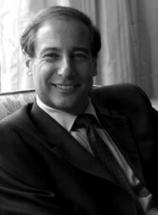American Lightning: Terror, Mystery, the Birth Of Hollywood, and the Crime of the Century
Review
American Lightning: Terror, Mystery, the Birth Of Hollywood, and the Crime of the Century
Superlatives are cast with great ease. How many times have
sportswriters told us we are watching the game of the season or
perhaps the decade? How often are political events described as the
most monumental of our generation? How many legal battles have been
labeled the “crime of the century?” This is not to be
critical of Howard Blum’s AMERICAN LIGHTNING but instead to
place the engaging historical narrative of the bombing of the
Los Angeles Times building on October 1, 1910 and the
ensuing trial of the alleged participants in a more appropriate
context.
Los Angeles in 1910 was a far different community than the
entertainment center of the world that it is today. Its population
of 319,000 placed the city behind Baltimore, Milwaukee and Newark.
The movie industry was in its infant stage. California was the
hotbed of American socialism, and the union movement was struggling
to gain a foothold in California life industry. The battle between
union and management would be shattered by an explosion on the
morning of October 1st that decimated the Times building
and left 20 men dead. Perhaps because the attack was on the
newspaper industry, the media treated the event as a crime of
enormous magnitude.
AMERICAN LIGHTNING is far more than the story of the bombing and
the subsequent trial of brothers J.J. and Jim McNamara. The
investigation, arrest and trial of the McNamaras represented
another battle in the war being waged in the early 20th century
between business and labor. Similar battles across the land
involved union leaders Eugene Debs and William Hayward.
Blum is not content to simply describe the events surrounding
the bombing. He has expanded the narrative by examining the lives
of three men, two who played a major role in the bombing and one
who helped create the modern cinema industry. William J. Burns,
recognized in 1910 as “the greatest detective of perhaps that
or any era,” and Attorney Clarence Darrow would be prominent
actors in the case. Director D. W. Griffith would play no actual
role here, but in 1913 he released From Dusk to Dawn, a
film loosely based on the case. Griffith actually had assisted
Burns in a prior investigation by arranging for the showing of a
movie that encouraged a confession from a suspect Burns was
investigating.
Burns investigated the crime by techniques that did not and
could not rely on the scientific methods that exist today. He
worked diligently gathering evidence across the nation. Looking
back on his investigation through the lens of the modern criminal
law framework of defendants’ rights, many of Burns’s
methods would not be tolerated in contemporary courtrooms. But
Burns and Otis Chandler, who employed him to find the perpetrators
of the bombing, could not be bothered by legal niceties. This was a
war between labor and owners, and in war anything goes.
Darrow, of course one of America’s prominent attorneys,
had already earned a reputation in representing labor defendants in
criminal cases. In later years he would gain fame for his defense
of John Scopes and Leopold and Loeb. Defending the McNamara
brothers was not the finest hour of his legal career. His clients
both went to prison, and charges of jury tampering ultimately put
Darrow in the defendant’s chair in a Los Angeles
courtroom.
Throughout the story, Blum paints a vivid and detailed account
of an important case in American legal history. What makes AMERICAN
LIGHTNING a compelling work is the author’s placing of the
crime in its historical context. The bombing of the Los Angeles
Times building and the resulting trial can only be understood
in the panoply of events occurring across the nation in the early
decades of the 20th century. By his portrayal, Blum has aided
readers in better understanding the events of that era and their
impact on America.
Reviewed by Stuart Shiffman on December 22, 2010
American Lightning: Terror, Mystery, the Birth Of Hollywood, and the Crime of the Century
- Publication Date: September 16, 2008
- Genres: Nonfiction, True Crime
- Hardcover: 352 pages
- Publisher: Crown
- ISBN-10: 0307346943
- ISBN-13: 9780307346940





